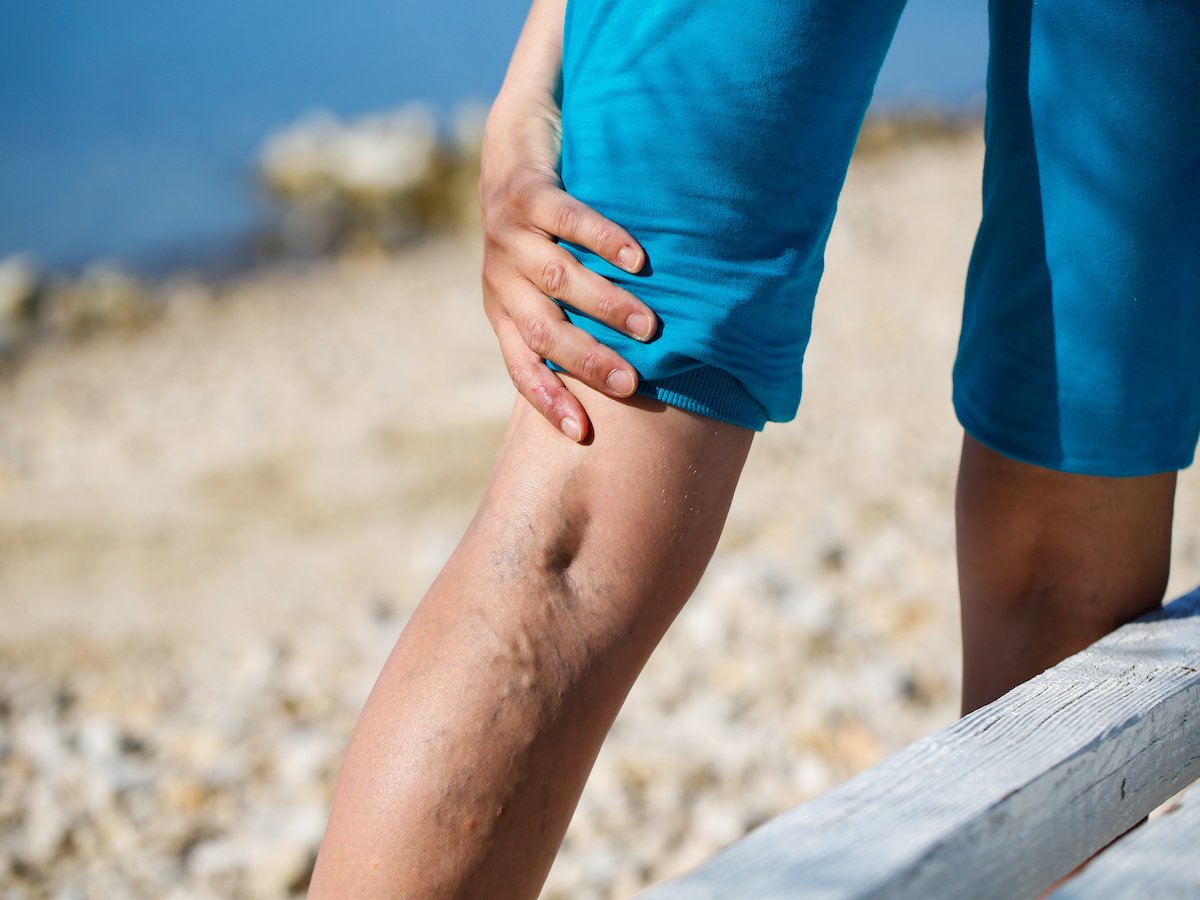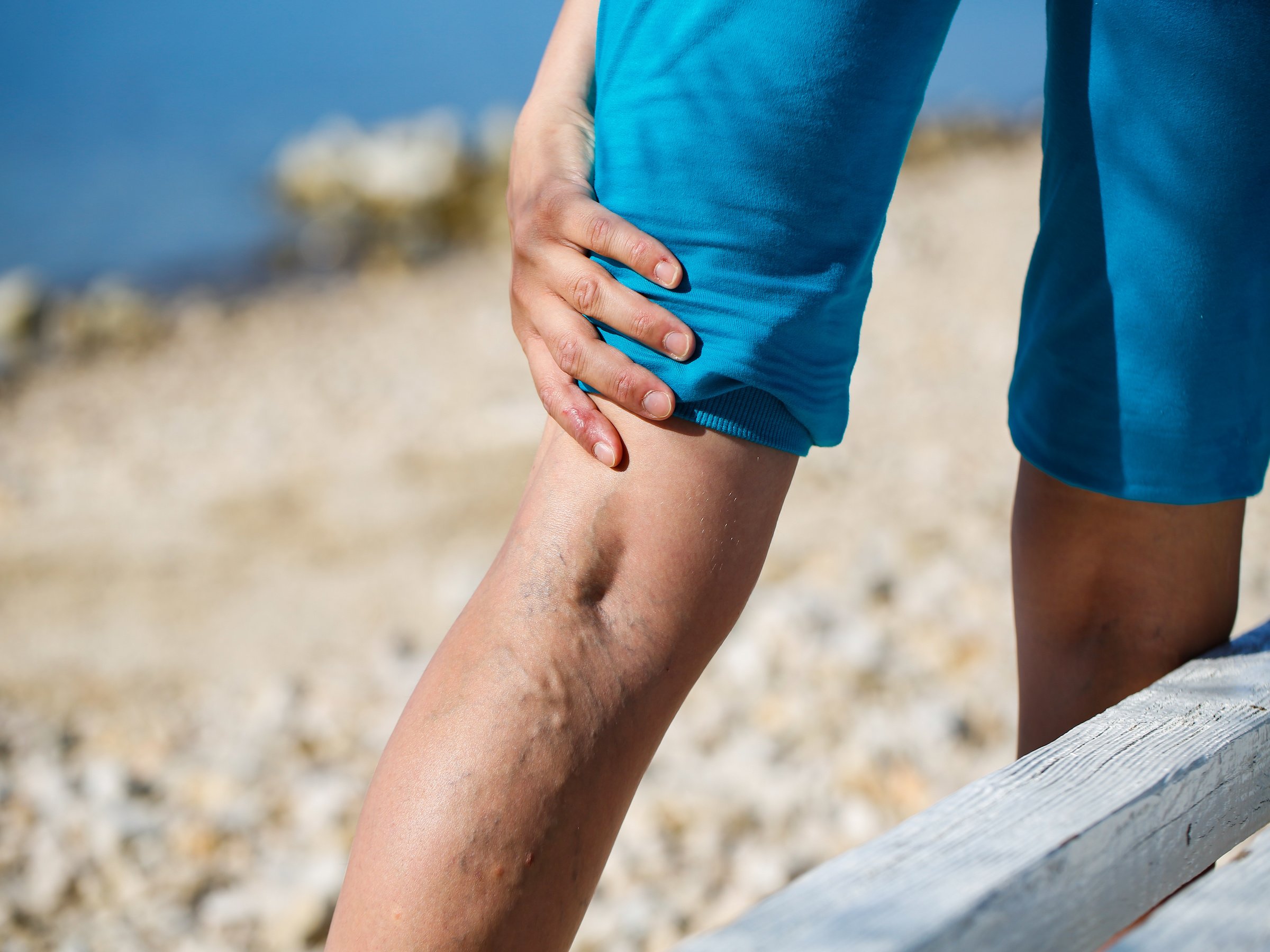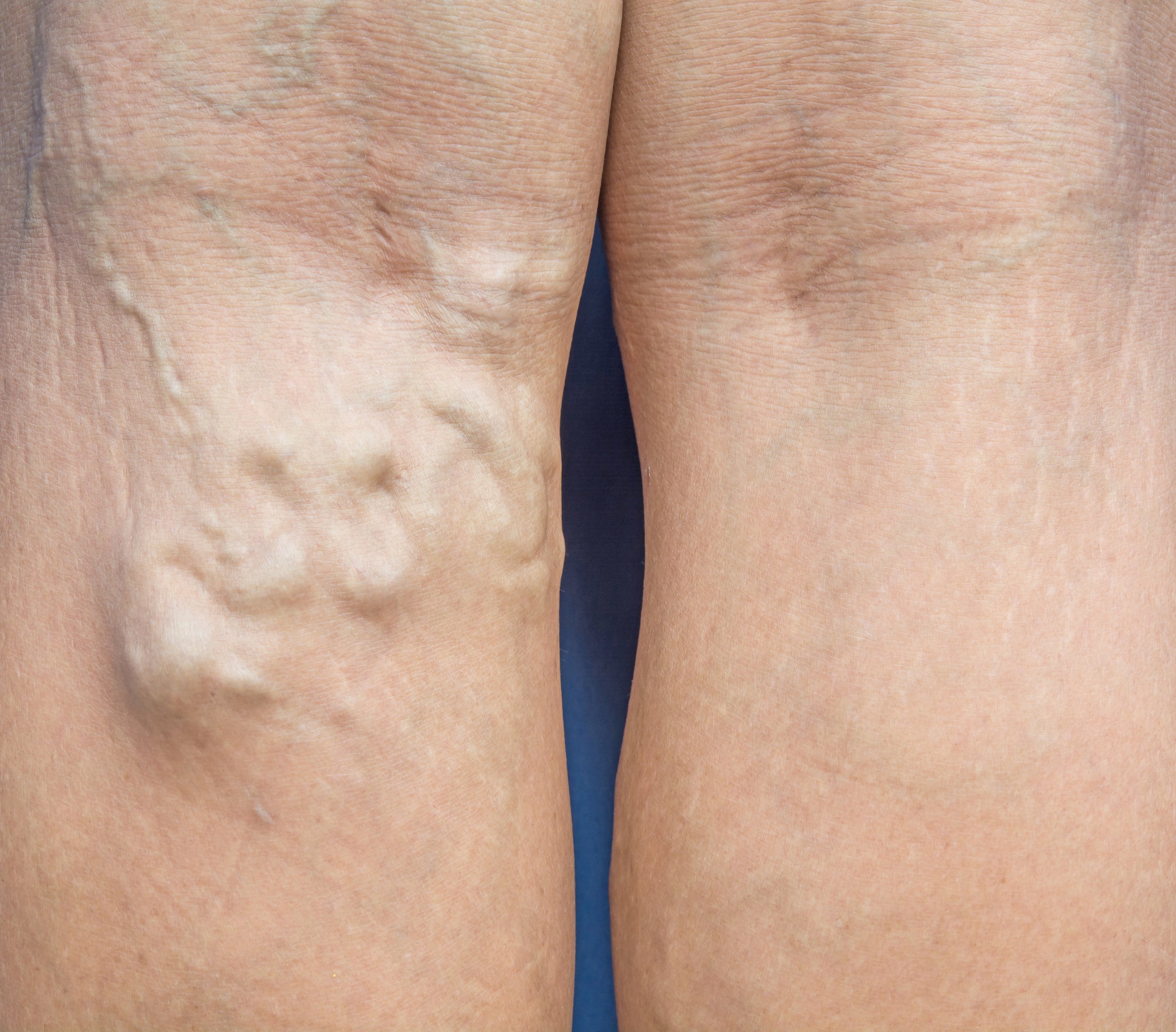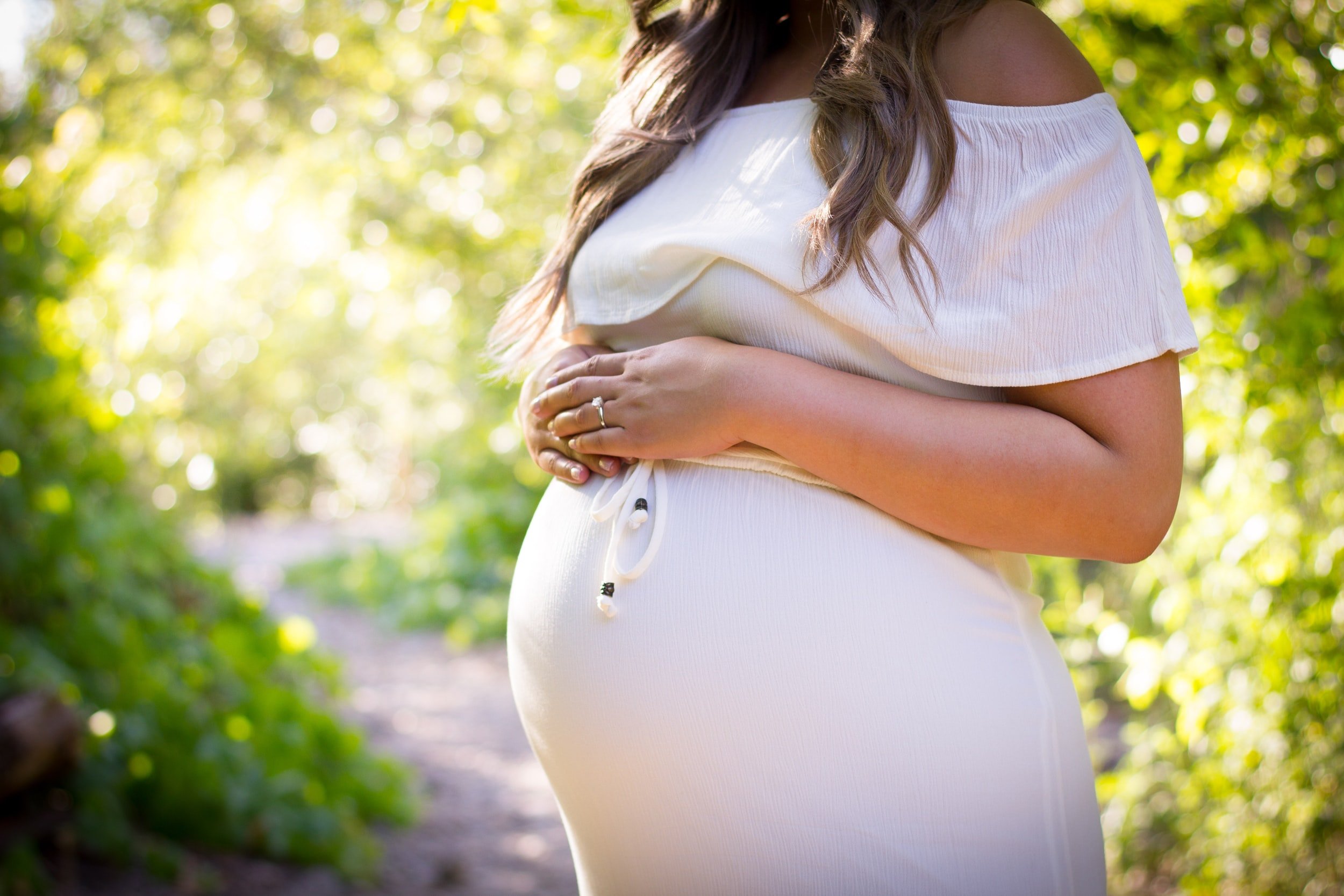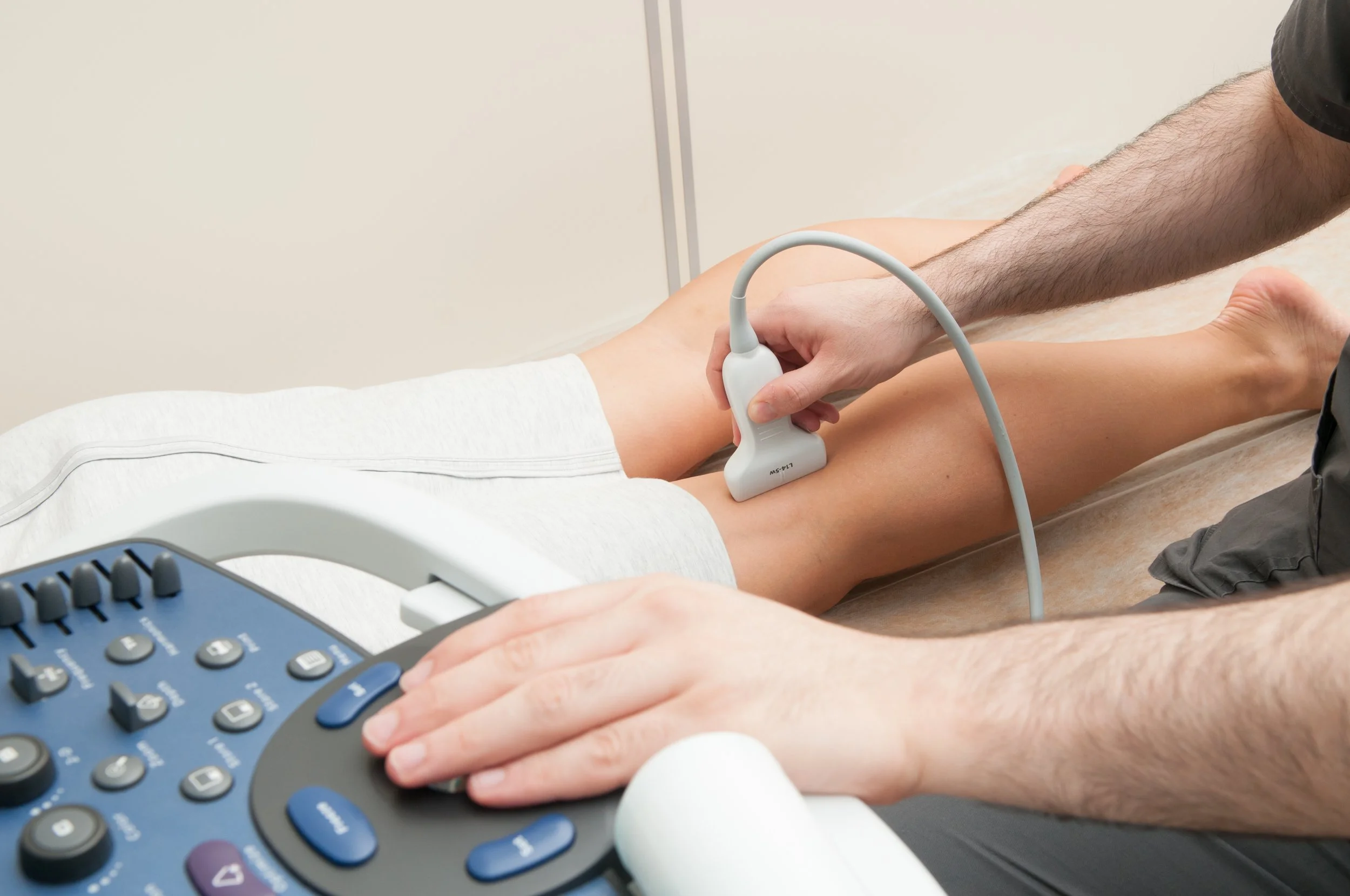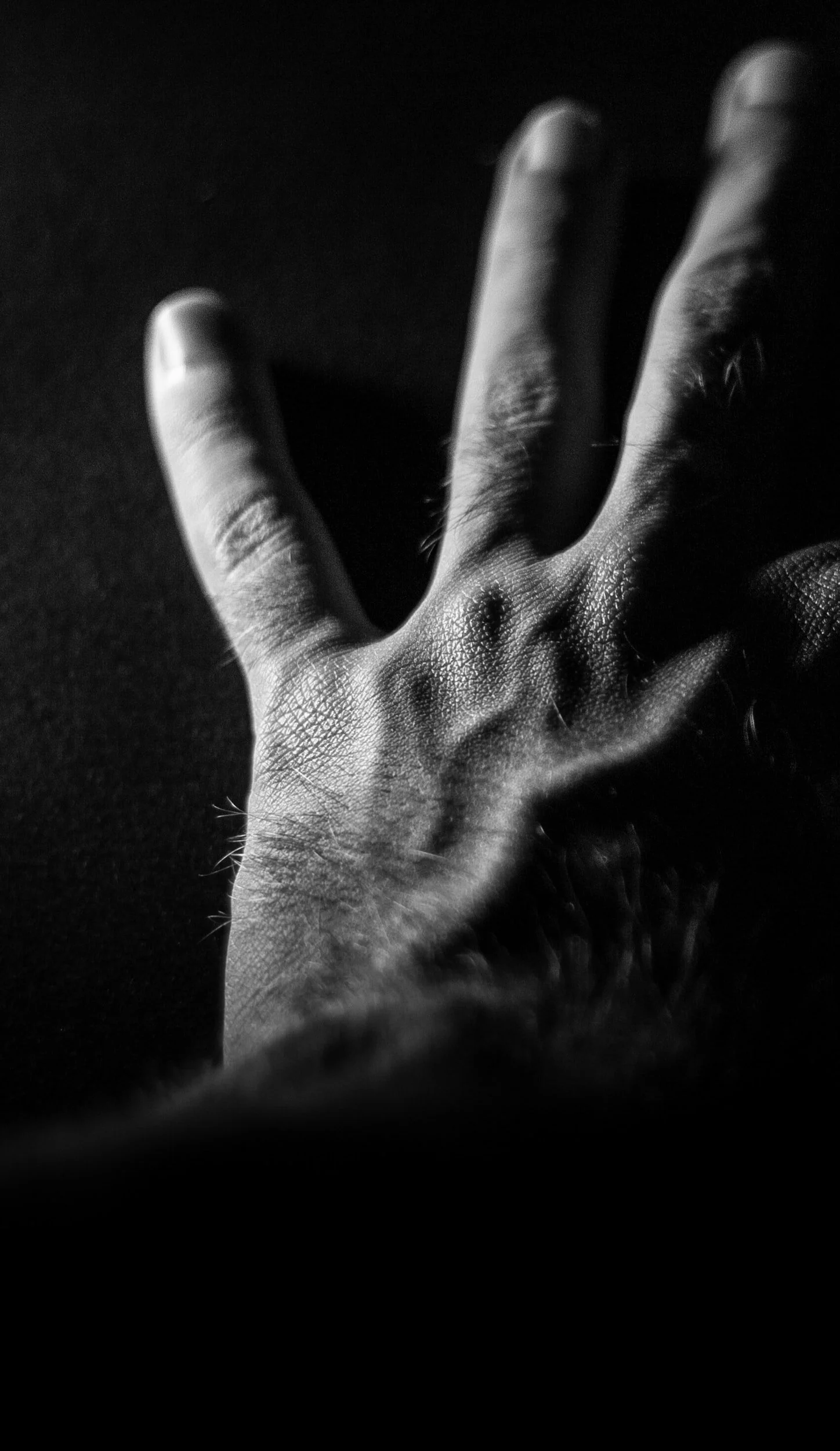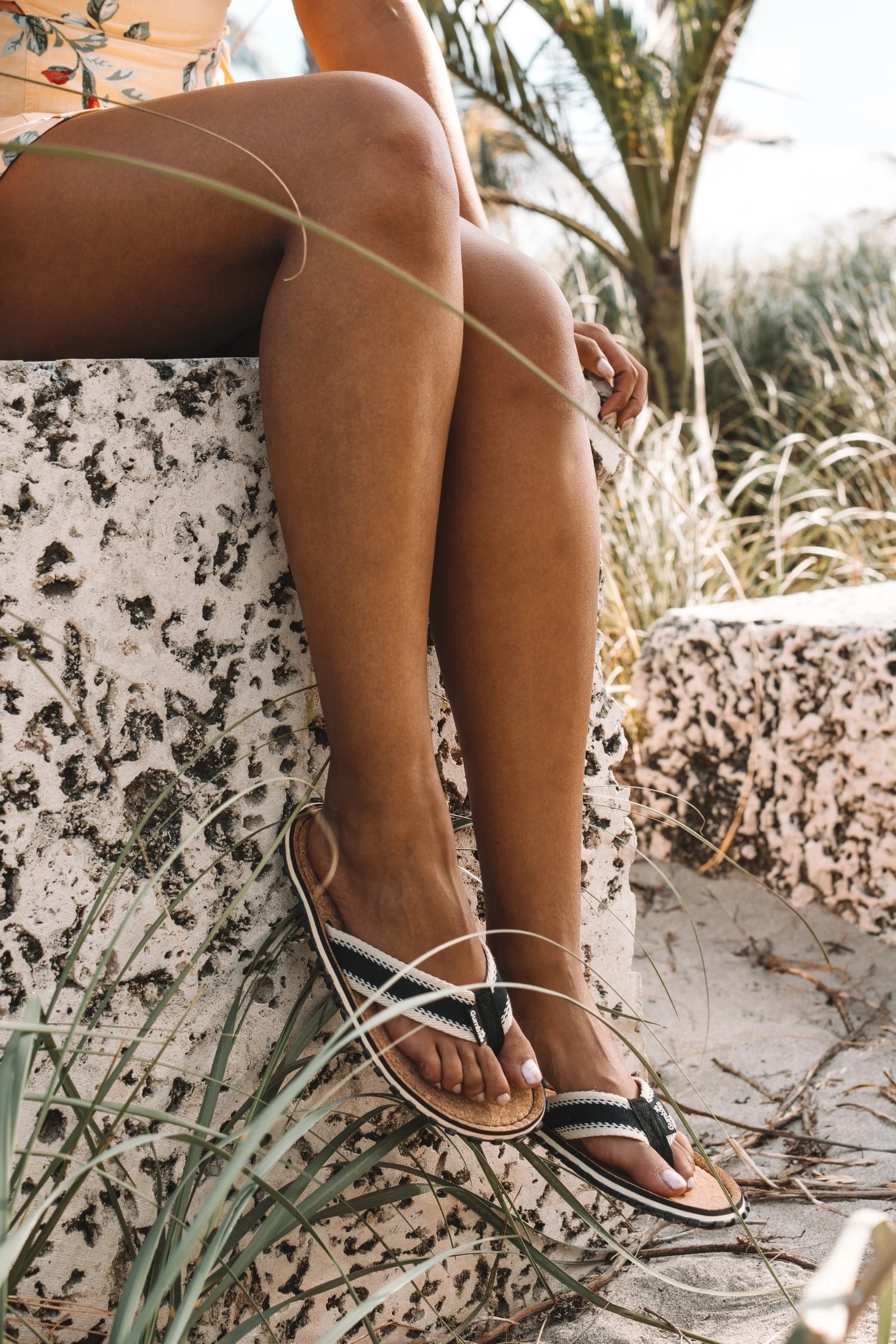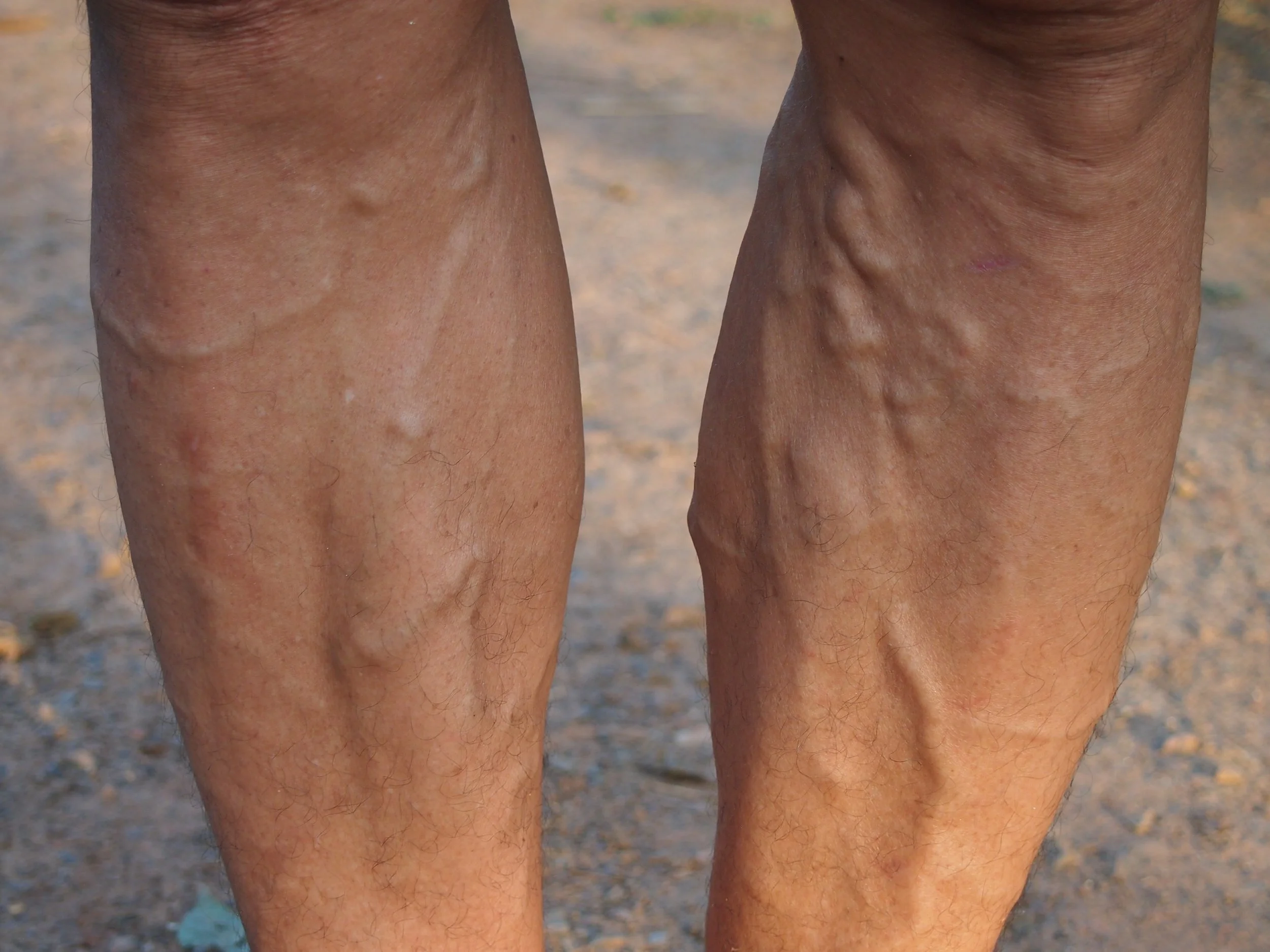Varicose Veins
Overview of Varicose Veins
Varicose veins are a common condition where abnormal, swollen veins appear near the surface of your skin.
Varicose veins occur when the valves in your veins weaken and are unable to properly keep blood flowing back up to your heart.
Varicose veins may be blue or dark purple in color, bulging and twisted in shape. They can cause pain, throbbing, fatigue, swelling, itching and cramps. In more severe cases varicose veins can lead to bleeding, ulcers or blood clots.
You are more likely to develop varicose veins if you sit or stand for long periods of time, are a woman, pregnant, obese, or have a family history of varicose veins.
Treatment options for varicose veins include wearing compression socks as well as sclerotherapy, laser ablation, or Varithena.
What are varicose veins?
Varicose veins are enlarged veins that can appear swollen or twisted.
They're usually a deep purple or blue color and found in the legs near the surface of your skin.
They develop when there are weak or damaged valves in your legs that are unable to maintain blood flow back up to your heart, which creates one-way valves and leads to pooling of blood.
This creates the twisted and enlarged appearance.
What are the symptoms of varicose veins?
Recognizing the signs and symptoms of varicose veins is essential for early control and treatment. Varicose veins symptoms include the following:
Aches and pains in the affected area
Visible veins that are bulging or twisted
Swelling and heaviness in the legs
Swelling of the ankles and feet
Itching around one or more varicose veins
Restless legs at night
Throbbing
Cramping
Darkened skin around varicose veins
Increased fatigue during physical activities.
What are the risk factors of varicose veins?
Unfortunately, varicose veins can happen to anyone due to lifestyle and physiological factors.
Generally, varicose veins are more common in women than men, although anyone can experience them.
Other risk factors include older age (over 50-years-old), obesity, hormonal changes during pregnancy or menopause, extended standing or sitting periods, genetics and living a sedentary lifestyle.
Certain behaviors or activities, such as standing for long periods of time or wearing tight clothing around the abdomen and pelvis area, can also increase the likelihood of varicose veins developing.
What is the difference between varicose veins and spider veins?
Varicose veins and spider veins are an undesirable, yet common problem.
While they may look similar, varicose veins and spider veins are two distinct conditions.
Generally, varicose veins pose a greater risk than spider veins and can be a sign of an underlying health issues, such as swelling in the legs or blood clots.
Varicose veins appear as large, bulging veins, usually on the legs, whereas spider veins have a network of thin red or blue vessels usually visible on the surface of the skin.
In some cases, varicose veins require medical treatment, while spider veins are a cosmetic issue.
How are varicose veins diagnosed?
Physical exam
Diagnosing varicose veins is not a complex process, but requires a physician's assessment. To properly diagnose varicose veins, the doctor will examine the affected area, check for any discoloration or ulcers and ask questions about any pain or other symptoms that may be caused by varicose veins.
Ultrasound
In some cases, an ultrasound or other imaging tests may be used to evaluate the severity of varicose veins and evaluate their size, shape, and blood flow. After diagnosis, the doctor will likely recommend treatment options such as lifestyle changes, surgery, or medications to help relieve the symptoms and reduce any risks associated with varicose veins.
What treatment options are there for varicose veins?
Compression socks
Compression socks have emerged to be an effective solution for individuals looking to alleviate these symptoms. Compression socks are designed to apply pressure to the legs, which helps to improve blood flow and prevent the pooling of blood in the veins, reducing the risk of varicose veins.
Sclerotherapy
Sclerotherapy is a popular medical procedure used to deal with varicose veins.
It's a simple, non-surgical process that can help you look and feel better and has been practiced around the world since the 1930s.
Varithena
Varithena is an injectable foam medication that has been proven as a safe and successful treatment to combat varicose veins quickly and effectively and without surgery or vein stripping.
Varithena is a non-surgical treatment used to treat varicose veins.


